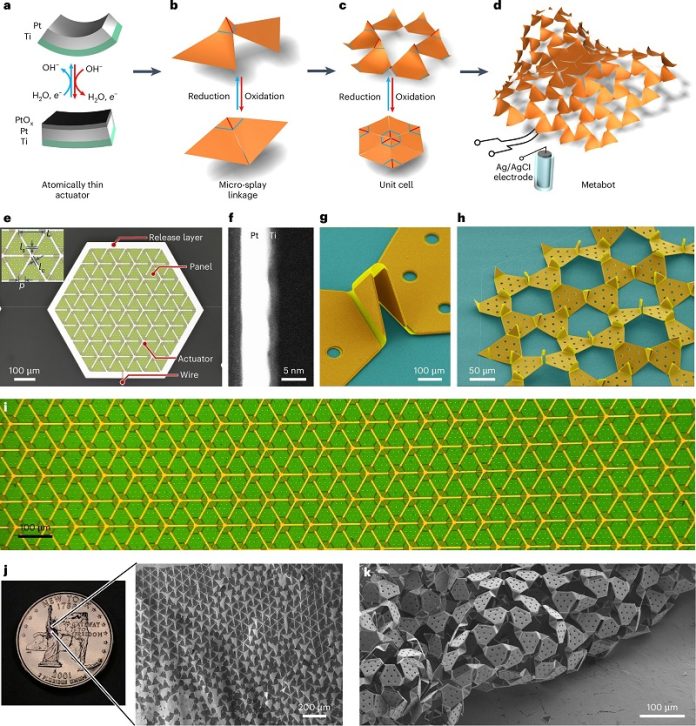
Researchers at Cornell University have developed tiny robots, less than 1 millimeter in size, that can fold into 3D shapes and crawl, offering exciting possibilities for the future of robotics.
These microscale robots start as flat 2D sheets, but with a jolt of electricity, they morph into preprogrammed 3D shapes and move.
This innovation is inspired by kirigami, a technique similar to origami, but with cuts in the material that allow it to fold, expand, and even move.
The study, titled “Electronically Configurable Microscopic Metasheet Robots,” was published in Nature Materials.
It was led by postdoctoral researchers Qingkun Liu and Wei Wang, under the guidance of Professor Itai Cohen from the Department of Physics. Cohen’s lab has previously worked on other microrobotic systems that can move their limbs, pump water, and walk autonomously.
According to Liu, the inspiration for these tiny robots came from living organisms that can change their shape.
“When people create robots, their shape is usually fixed once they are made. Our goal was to make a robot that can change its overall shape,” he explained. The team succeeded by designing what they call a “metasheet robot.”
The “meta” part refers to metamaterial, meaning the robot is made up of many small components working together to give it unique mechanical properties.
The robot is made from a hexagonal grid, consisting of about 100 tiny panels of silicon dioxide. These panels are connected by more than 200 ultra-thin hinges, each just 10 nanometers thick.
When electricity is applied through wires, these hinges form folds that lift the robot into 3D shapes.
The robot can change its size by up to 40% as the panels open and close, allowing it to expand, contract, and even wrap itself around objects.
The researchers are excited about the future potential of this technology. They believe these robots could eventually be combined with electronic controllers to create “elastronic” materials, which are flexible and responsive to their environment.
Such materials could have uses in a variety of fields, from reconfigurable machines to tiny medical devices. These new materials might even be able to react to impacts or other stimuli faster than the speed of sound.
Professor Cohen explained that these robots could be designed to harvest energy from light, enabling them to react in preprogrammed ways. For example, they could “run” away when touched or push back with more force than they experienced.
These ideas push the boundaries of what is possible in nature and could pave the way for intelligent materials that act based on physical principles not seen in the natural world.
The work marks a significant step toward creating robots and materials that can adapt and respond to their surroundings in ways that traditional materials cannot.



